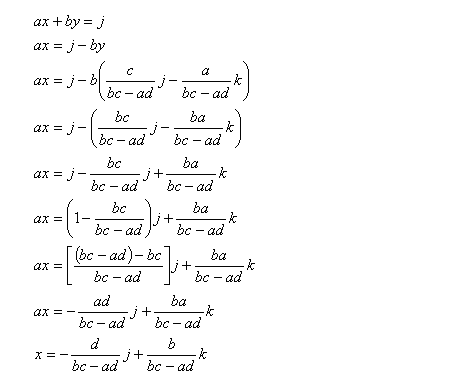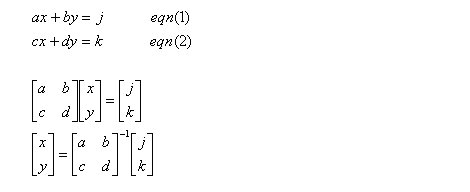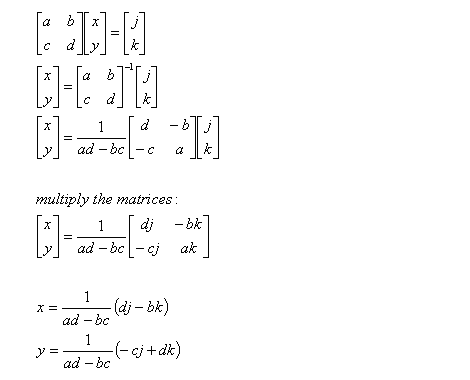What is the matrix?
The god-sister was having conceptual trouble with matrices. We can’t blame her; the mathematics text books we use do not justify the importance of matrices.
Today, I received a simple message from her:
PS. I get matrices. Thanks!
Perhaps it would be useful to make the material publicly available.
***
The following shows one aspect of how matrices are damn useful.
It might appear magical, that the two solution methods below manage to produce the same result. It is not magic.
Matrices were designed by humans. They were designed to have certain properties (the main one being: for multiplications, sum the products of row and column elements).
Matrices and matrix manipulation rules were designed so that they would be useful. If a matrix operation was defined with some stupid rule (like when you multiply two matrices, you multiply each number with the other number, and then add the number of days in your menstrual cycle) then matrices will be of no mathematical use.
Lets have two equations:

A typical way to solve this is as follows:
Multiply equation (2) with a suitable number so that the coefficient for x is the same as in equation (1).
Then subtract equation (2) from (1). From this step, we will be able to solve for y. With y known, we then put y into one of the equations to find x.
Sticking to the symbols (so we can have a general solution that would work with any a, b, c, d, j and k):

Now, in equation (1), y is now expressed as known numbers. Therefore, y is now solved. We now replace y into equation (1):

Because we are long winded, we will repeat our results:

We will also rearrange the results for future convenience:

If we were to solve this pair of equations using a matrix, the procedure applies:

To inverse a 2-by-2 matrix:


The results match the result we obtained from the above equation manipulation. And it’s much faster, no?
Today, I received a simple message from her:
PS. I get matrices. Thanks!
Perhaps it would be useful to make the material publicly available.
The following shows one aspect of how matrices are damn useful.
It might appear magical, that the two solution methods below manage to produce the same result. It is not magic.
Matrices were designed by humans. They were designed to have certain properties (the main one being: for multiplications, sum the products of row and column elements).
Matrices and matrix manipulation rules were designed so that they would be useful. If a matrix operation was defined with some stupid rule (like when you multiply two matrices, you multiply each number with the other number, and then add the number of days in your menstrual cycle) then matrices will be of no mathematical use.
Lets have two equations:

A typical way to solve this is as follows:
Multiply equation (2) with a suitable number so that the coefficient for x is the same as in equation (1).
Then subtract equation (2) from (1). From this step, we will be able to solve for y. With y known, we then put y into one of the equations to find x.
Sticking to the symbols (so we can have a general solution that would work with any a, b, c, d, j and k):

Now, in equation (1), y is now expressed as known numbers. Therefore, y is now solved. We now replace y into equation (1):

Because we are long winded, we will repeat our results:

We will also rearrange the results for future convenience:

If we were to solve this pair of equations using a matrix, the procedure applies:

To inverse a 2-by-2 matrix:


The results match the result we obtained from the above equation manipulation. And it’s much faster, no?
Labels: applied mathematics, mathematics

<< Home